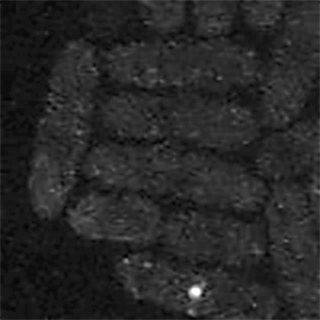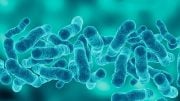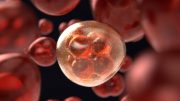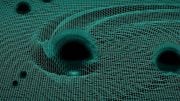
Researchers have unraveled the mystery by using computer simulations to understand the formation and constriction of contractile rings. Credit: Yale University
A team of scientists from Yale and Columbia universities has shed new light on the mechanics of the division of cells that makes life possible.
Forming like a blown smoke ring does, a “contractile ring” similar to a tiny muscle pinches yeast cells in two. The division of cells makes life possible, but the actual mechanics of this fundamental process have proved difficult to pin down.
Researchers at Yale and Columbia universities recently shed light on this mystery by accumulating enough information to simulate the formation and constriction of contractile rings on a computer.
In the accompanying movie, a time series of micrographs show the formation and constriction of contractile rings in four rod-shaped yeast cells. One of the contractile ring proteins is shown in white. Clusters of the protein accumulate around the middle of each cell and then condense into a ring that constricts to pinch the cell in two.
Thomas Pollard, Sterling Professor of Molecular, Cellular, and Developmental Biology at Yale, and his colleagues discuss the process in recent studies published in Developmental Cell and Cell Reports.
References:
“Mechanism of Cytokinetic Contractile Ring Constriction in Fission Yeast” by Matthew R. Stachowiak, Caroline Laplante, Harvey F. Chin, Boris Guirao, Erdem Karatekin, Thomas D. Pollard and Ben O’Shaughnessy, 9 June 2014, Developmental Cell.
DOI: 10.1016/j.devcel.2014.04.021
“Contractile Ring Stability in S. pombe Depends on F-BAR Protein Cdc15p and Bgs1p Transport from the Golgi Complex” by Rajesh Arasada and Thomas D. Pollard, 11 September 2014, Cell Reports.
DOI: 10.1016/j.celrep.2014.07.048









Be the first to comment on "Yale and Columbia Biologists Shed New Light on Cell Division"